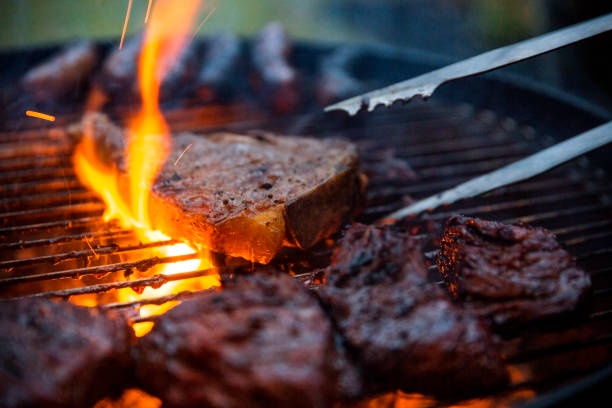A Historical Love Affair
To understand the roots of the American love affair with beef, we must journey back through history. The cowboy culture of the 19th century, immortalized in countless Westerns, glorified the cattle rancher as a symbol of rugged individualism. This romanticized image, coupled with the expansion of the railroad, facilitated the mass transportation of cattle from the ranches of the Midwest to the burgeoning cities in the East. As a result, beef became more accessible to a wider audience.
The emergence of the fast-food industry in the mid-20th century further solidified beef's place in American diets. Iconic chains like McDonald's popularized the hamburger, turning it into a symbol of convenience and affordability. The fast-paced lifestyle embraced by many Americans made quick and filling beef-based meals an attractive option, further embedding beef into the nation's culinary identity.
The Cultural Significance of Beef
Beyond its historical roots, beef holds a unique cultural significance in the United States. The act of grilling burgers and steaks is not merely a way to prepare food; it has become a social ritual ingrained in American life. Barbecues, tailgates, and family gatherings often center around the grill, where beef takes the spotlight. The communal experience of sharing a hearty beef meal contributes to its enduring popularity.
Moreover, iconic American dishes such as the cheeseburger and steak have achieved international fame, becoming ambassadors of American cuisine. The allure of these dishes, often associated with indulgence and abundance, adds to the mystique surrounding beef consumption. In many ways, beef has become a symbol of celebration, a centerpiece for holidays, milestones, and moments of joy.
Economic Factors at Play
The economic landscape also plays a pivotal role in explaining why Americans consume so much beef. The United States boasts a robust and efficient cattle industry, making beef production relatively cost-effective. This efficiency translates to lower prices for consumers, making beef an attractive protein source, especially when compared to other meats.
Government subsidies for the beef industry further contribute to the affordability of beef. These subsidies, aimed at supporting farmers and ensuring a stable food supply, make beef products more economically viable for both producers and consumers. As a result, the accessibility and affordability of beef make it a staple in the American diet.
Nutritional Perceptions and Misconceptions
The nutritional aspect also plays a role in the enduring popularity of beef. Traditionally, beef has been perceived as a good source of essential nutrients such as protein, iron, and zinc. While these nutrients are indeed important for a balanced diet, the perception of beef as an indispensable source has contributed to its widespread consumption.
However, it is essential to note the ongoing debate surrounding the health implications of excessive red meat consumption. Studies linking red meat to certain health risks have raised awareness about the need for moderation. Nevertheless, deeply ingrained perceptions about beef's nutritional value, coupled with its savory taste, continue to drive its consumption.
Conclusion
The American love affair with beef is a multifaceted phenomenon rooted in history, culture, economics, and nutritional perceptions. From the cowboy image of the Wild West to the ubiquity of fast-food chains, beef has become a culinary symbol that transcends mere sustenance. The communal experience of sharing a grilled steak or burger, coupled with the economic factors that make beef production efficient and affordable, further cements its place in American diets.


No comments yet